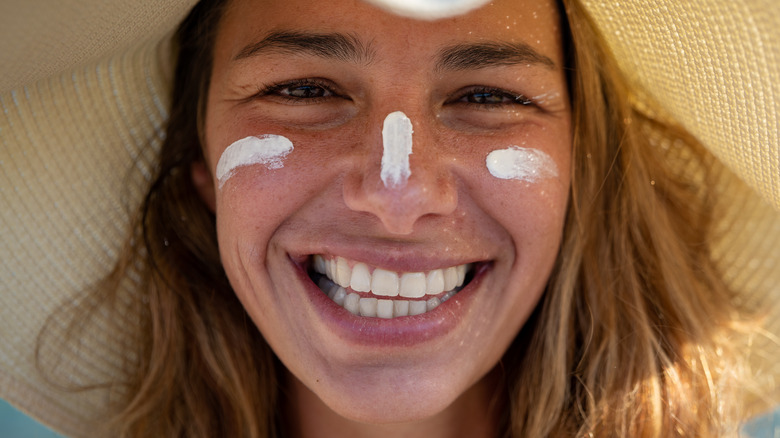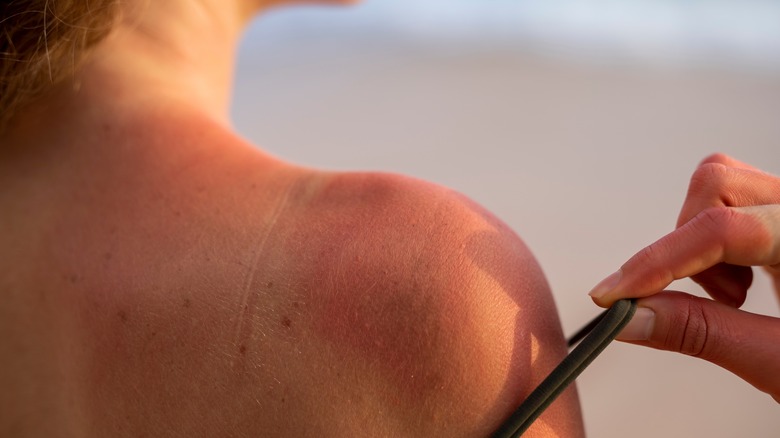Sun Rash, Sunburn, Sun Poisoning: What's The Difference Between The Hot Weather Hazards?
When the weather's hot, it's tempting to toss on a bathing suit, grab your keys, throw a towel in the back seat, and head straight to the beach or pool. Your official reminder is here: pause and prep before you race outside — you'll thank yourself.
Protecting yourself from over-exposure to the sun's ultraviolet (UV) rays is the key to preventing sun rash, sunburn, and sun poisoning. What you need to know is that at first glance, each of these hot weather hazards looks similar to the others, but they vary in symptoms and severity. If you roast yourself to chase the perfect tan, your sunburn will be painful and unpleasant, but you can treat it at home. Sun rash and sun poisoning, however, may require a doctor's visit.
Pro tip: your best friends include a stylish wide-brimmed hat, sunscreen of 30 SPF or higher that you can slather on your face and any exposed skin, and UV ray-blocking sunglasses. For broad spectrum protection and higher-quality ingredients, carry Korean sunscreen around with you everywhere this summer.
Sun rash and heat rash: are they the same?
These terms are used interchangeably, but they're actually different conditions. The key to remembering what distinguishes them is that sun rash happens to bare skin that is exposed to the sun. Heat rashes flare up on skin that's clothed and hidden from the sun.
Sun rash is usually the result of an allergy (to the sun or a sunscreen ingredient), and sometimes, the allergy is an inherited condition. It's red, itchy, and blotchy, and it can also look like small blisters, welts, or hives. Aside from the allergic reaction, it can develop as an add-on condition that arises after getting sun poisoning, or, oddly, from contact with parsnips and other plants. Applying some aloe vera or an over-the-counter ointment can reduce itchiness. See your dermatologist if you experience rashes frequently or if a fever arises with sun rash, as it might be an infection.
Heat rash, on the other hand, happens when sweat gets caught underneath clogged pores in skin folds under the arms and in the groin. Often, you can get a heat rash from over-exerting yourself when it's hot while wearing clothes that are too tight. Another name for heat rash is prickly heat because of its tiny, itchy-feeling blisters. It may take a few weeks to develop symptoms. To treat it, you can avoid the heat, apply cool wet towels, and use corticosteroid cream to reduce inflammation.
The difference between sunburn and sun poisoning
If you've ever had a sunburn, you may remember that it feels painful at first, and then it becomes itchy after a few days. The sun's UVB rays can burn any exposed parts of your body, turning those areas red. Even once you're out of the sun, your skin might feel hot.
Sunburned skin is smooth (compared to a bumpy sun rash), and it may swell and blister if you have a second-degree burn. However, it will start to peel after a few days. You can treat sunburn with cool baths or showers, aloe or moisturizer, an optional pain reliever, and plenty of water to stay hydrated.
Sun poisoning is potentially serious. It's caused by prolonged sun exposure and an allergic reaction called polymorphous light eruption. In addition to a burn, you may develop hives, bumps, and blisters. Other symptoms include dehydration, inflamed skin, nausea, fever, chills, headache, and dizziness. See a doctor or visit urgent care if you have a bad burn and flu-like symptoms — you may need an IV to combat dehydration and antibiotics to prevent infection. Sunscreen is your best bet against sun rash, burns, sun poisoning, and skin cancer. As you explore different protective skincare products, consider whether an SPF powder is as effective as lotion.


